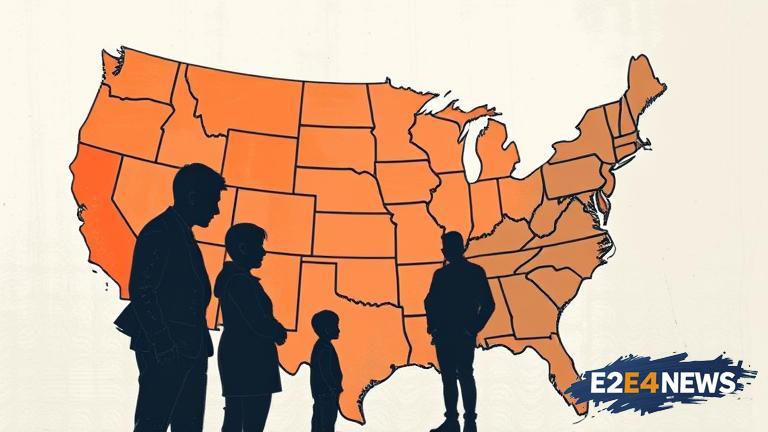The United States has witnessed a significant decline in its birthrate, with the number of births falling to a historic low. According to recent data, the birthrate has dropped to 1.64 children per woman, which is below the replacement rate of 2.1. This decline has been attributed to various factors, including a decrease in fertility rates among women, an increase in access to birth control, and a shift in societal values. The COVID-19 pandemic has also played a role in the decline, as many couples have chosen to delay or forgo having children due to economic uncertainty. The decline in birthrate has significant implications for the country’s demographic future, including a potential shortage of workers to support the aging population. The US is not alone in experiencing a decline in birthrate, as many other developed countries are also facing similar challenges. The decline in birthrate has been most pronounced among younger women, with those under the age of 20 experiencing the largest decline. In contrast, women over the age of 40 have seen a slight increase in birthrate. The decline in birthrate has also been linked to an increase in education and career opportunities for women, as well as a shift towards more urban and single-person households. The US government has implemented various policies to support families and encourage childbirth, including the expansion of parental leave and childcare benefits. However, more needs to be done to address the underlying causes of the decline and to support families in their decision to have children. The decline in birthrate has also raised concerns about the potential impact on the economy, including a potential shortage of skilled workers and a strain on social security and pension systems. To address these concerns, policymakers must consider a range of solutions, including increased support for families, improved access to education and job training, and a more comprehensive approach to addressing the root causes of the decline. The US birthrate has been declining for several years, but the latest data suggests that the decline is accelerating. The decline in birthrate is not limited to any one region or demographic group, but rather is a widespread phenomenon that affects the entire country. The US has a diverse population, and the decline in birthrate is likely to have different impacts on different communities. For example, some communities may experience a more significant decline in birthrate due to cultural or socioeconomic factors. The decline in birthrate has also raised concerns about the potential impact on the country’s population growth and demographic makeup. The US population is projected to continue growing, but at a slower rate than in the past. The decline in birthrate has significant implications for the country’s healthcare system, including a potential shortage of healthcare workers and a strain on healthcare resources. The US government must consider a range of solutions to address the decline in birthrate, including increased support for families, improved access to education and job training, and a more comprehensive approach to addressing the root causes of the decline. The decline in birthrate is a complex issue that requires a multifaceted approach to address. The US government, businesses, and individuals must work together to support families and encourage childbirth, while also addressing the underlying causes of the decline. The decline in birthrate has significant implications for the country’s future, and it is essential that policymakers take a proactive approach to addressing this issue. The US birthrate is likely to continue declining in the coming years, and it is crucial that policymakers develop effective solutions to address this trend. The decline in birthrate is a challenge that requires a comprehensive and coordinated approach to address, and it is essential that policymakers consider a range of solutions to support families and encourage childbirth.
